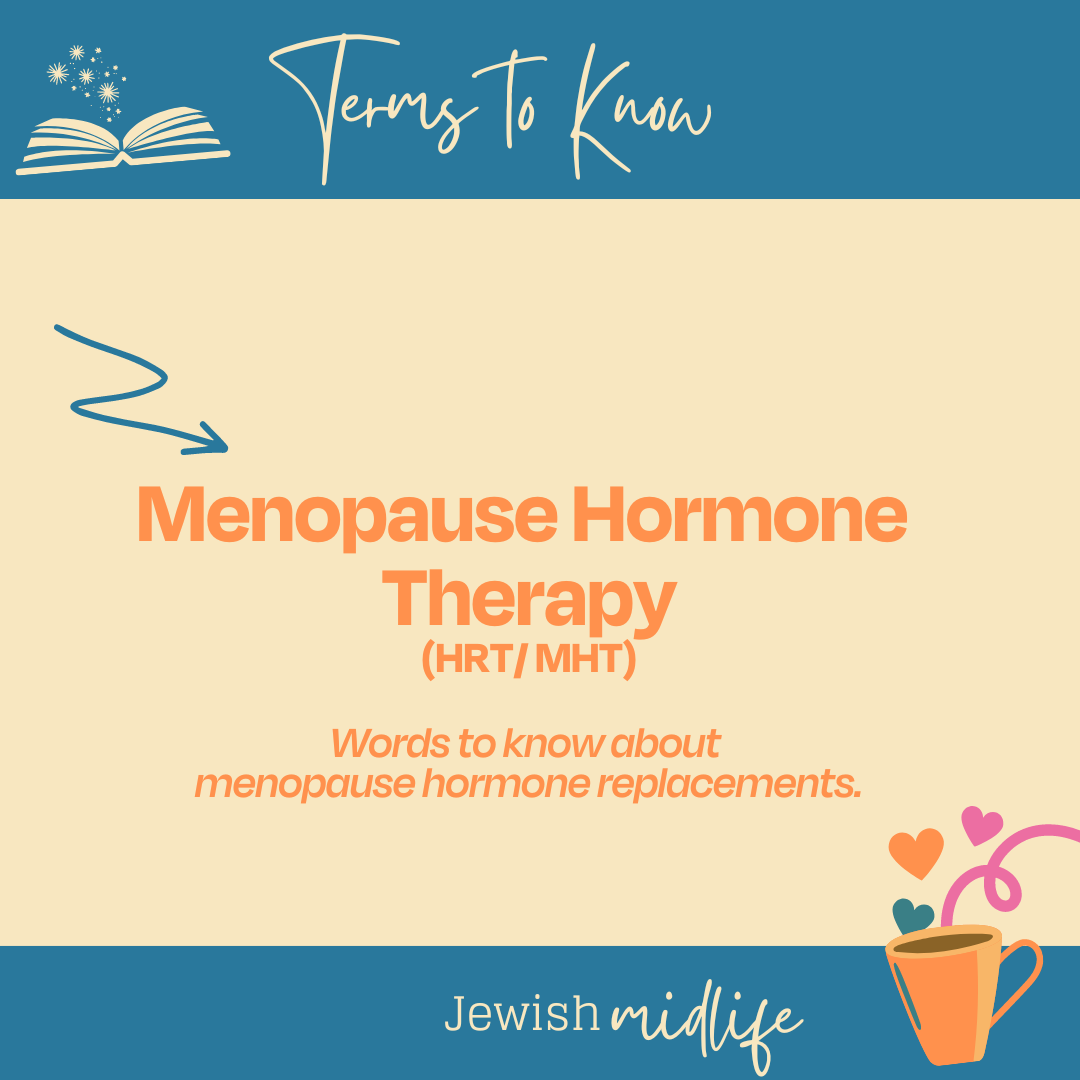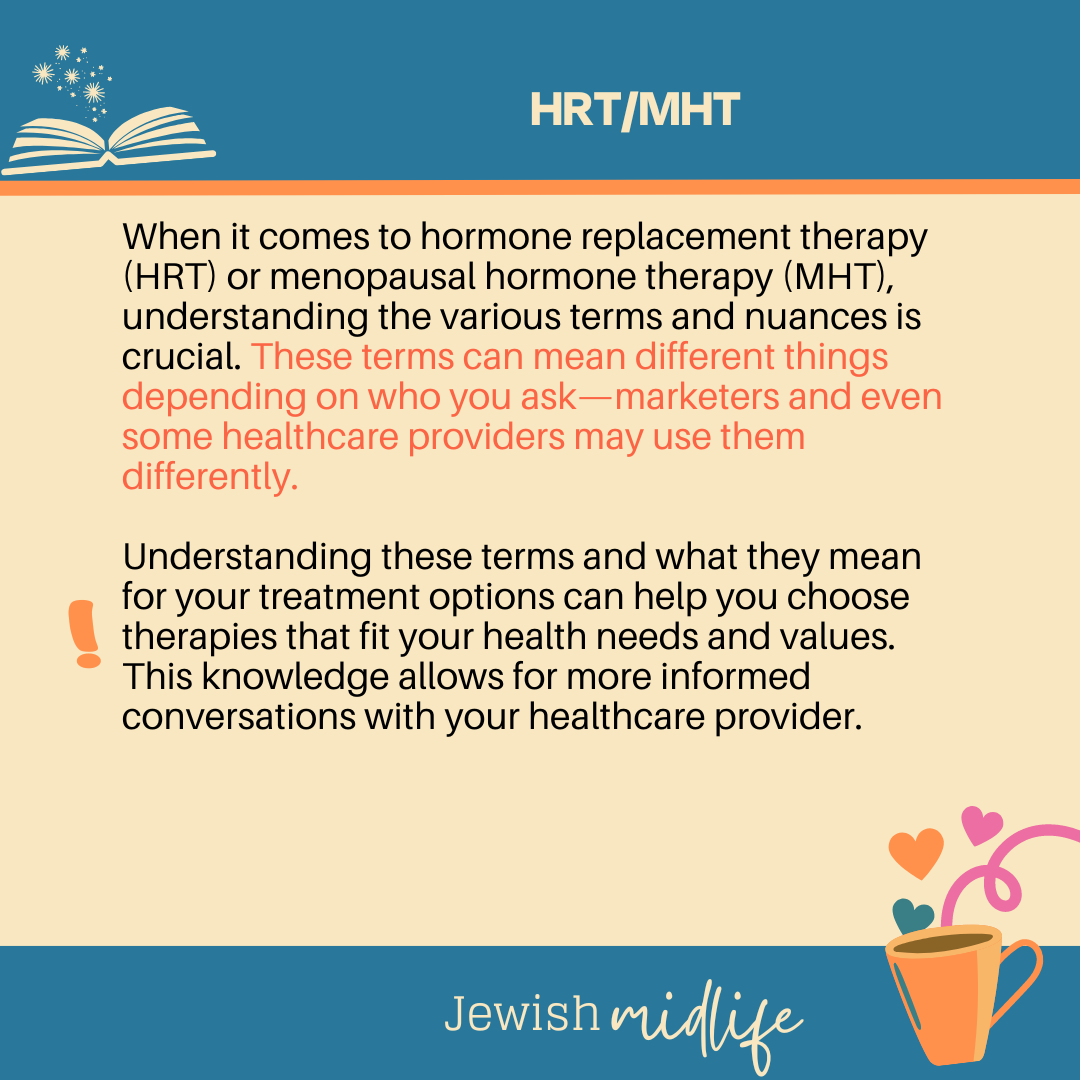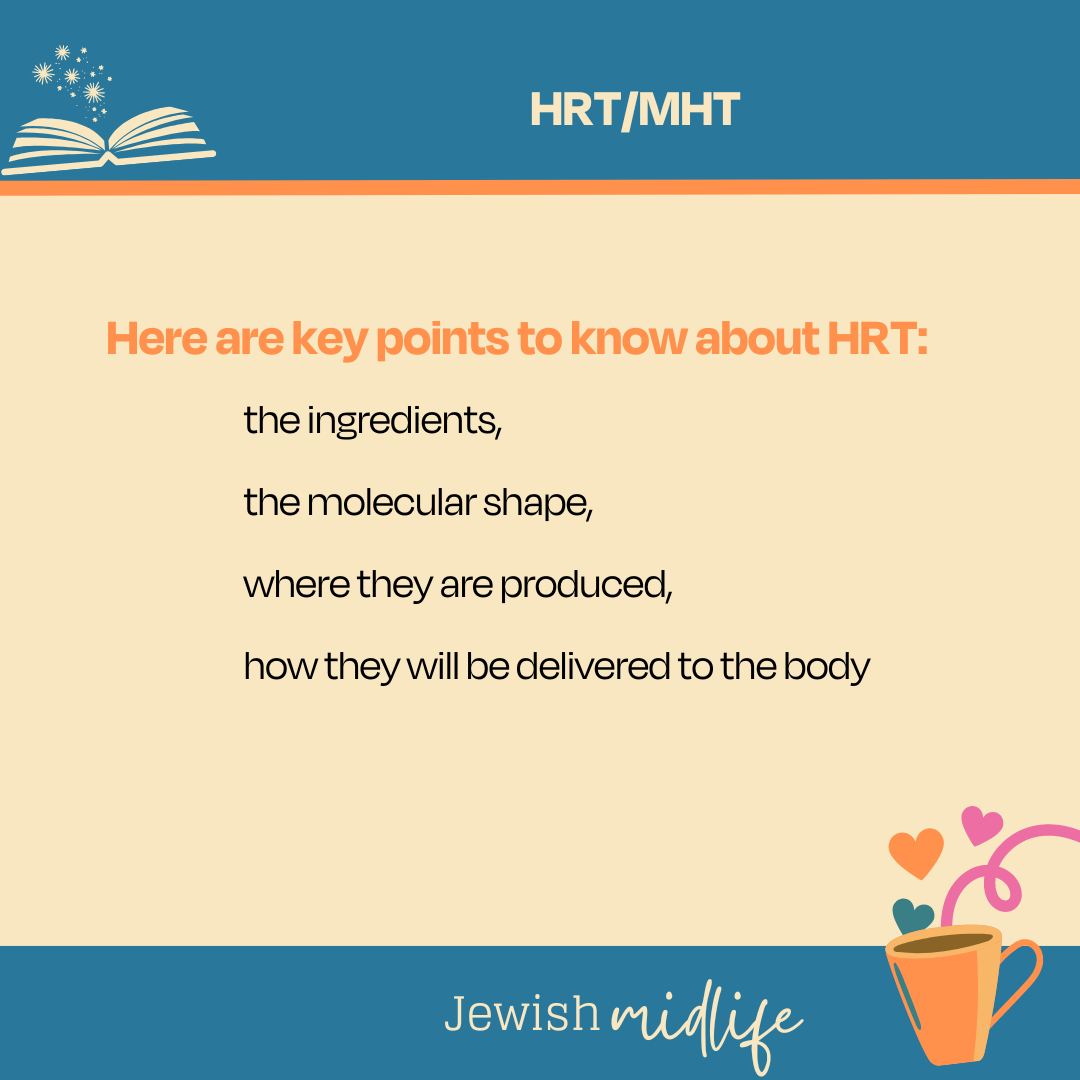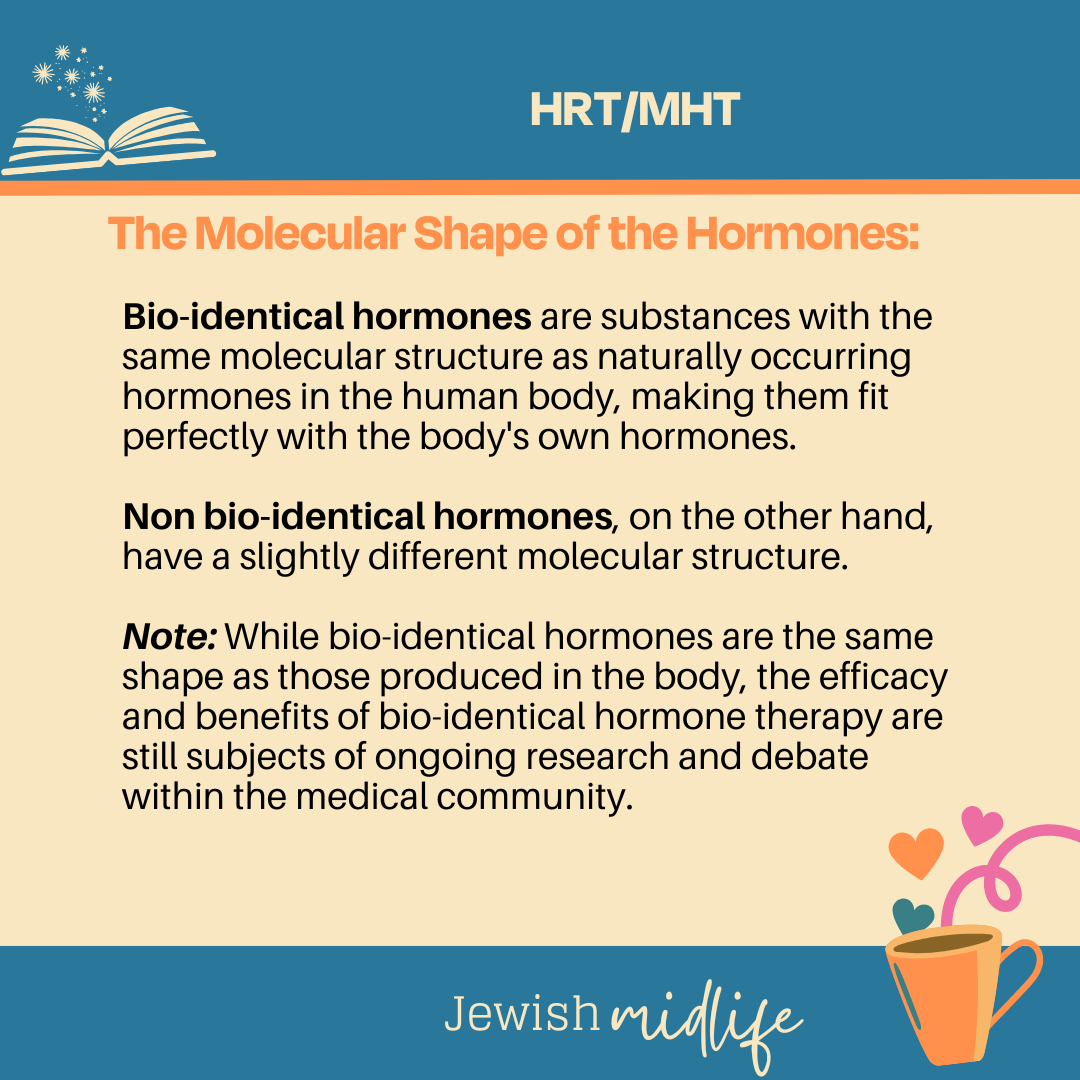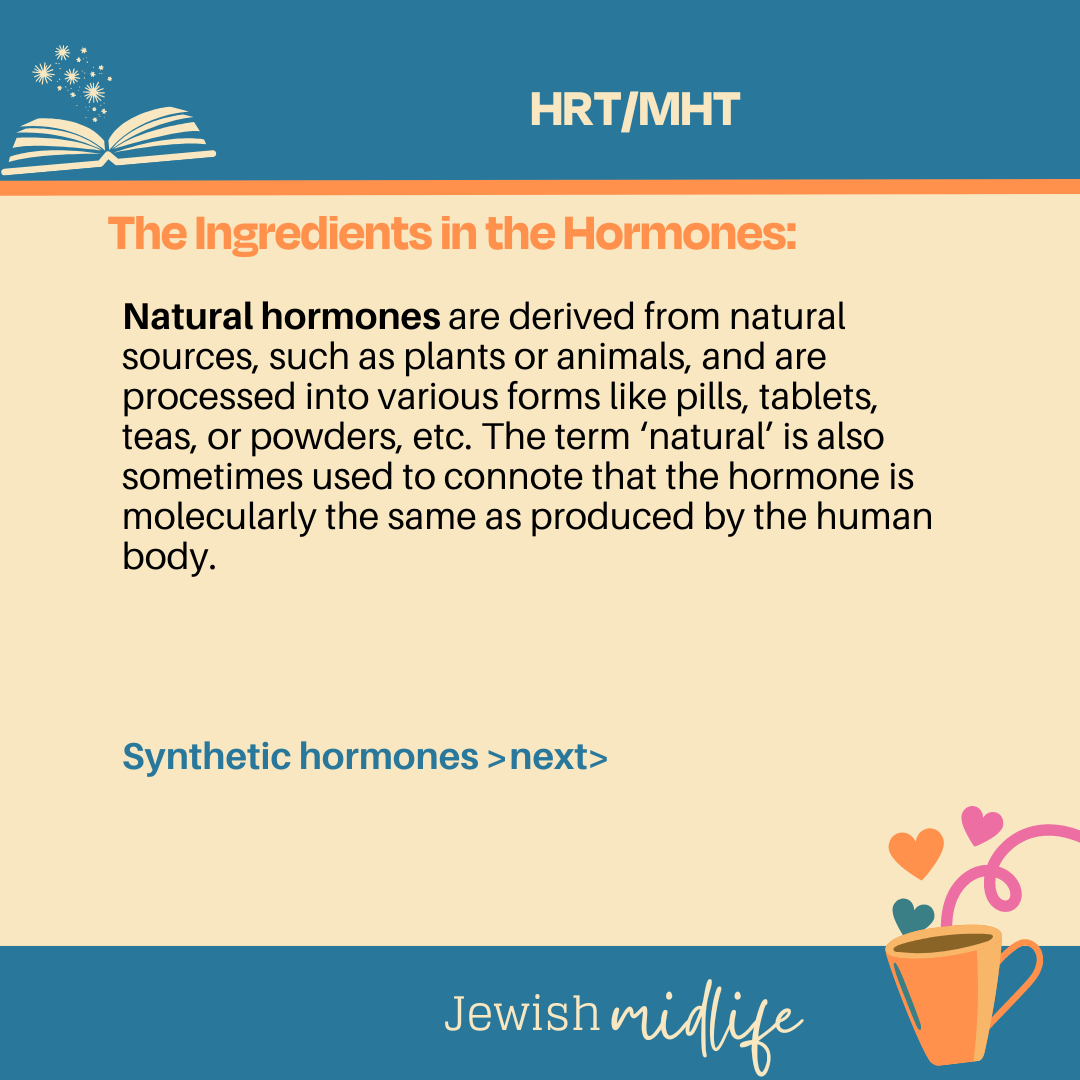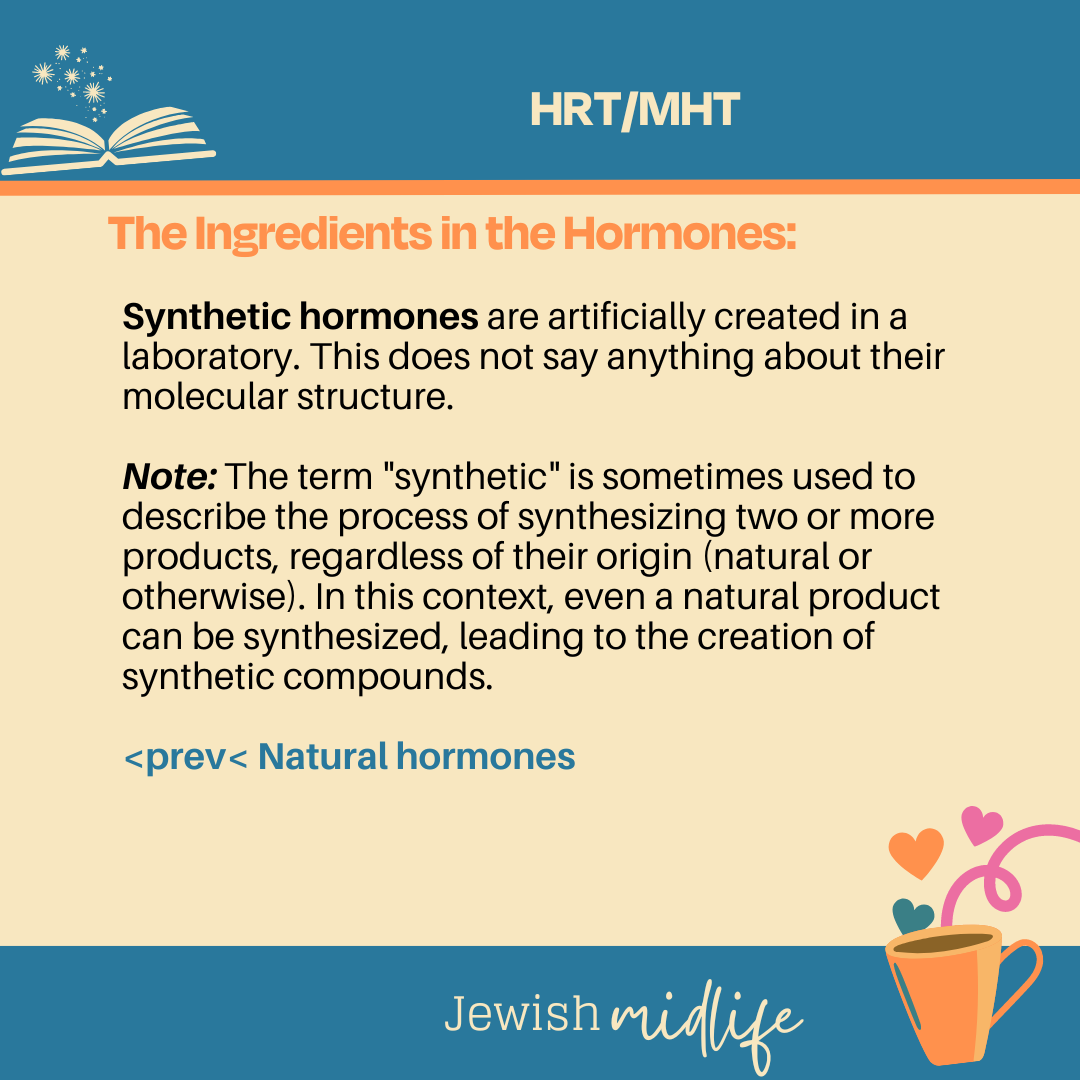When it comes to hormone replacement therapy (HRT) or menopausal hormone therapy (MHT), understanding the various terms and nuances is crucial. These terms can mean different things depending on who you ask—marketers and even some healthcare providers may use them differently.
Understanding these terms and what they mean for your treatment options can help you choose therapies that fit your health needs and values. This knowledge allows for more informed conversations with your healthcare provider.
Here are key points to know about HRT:
- the ingredients,
- the molecular shape,
- where they are produced,
- how they will be delivered to the body
THE MOLECULAR SHAPE OF THE HORMONES
- Bio-identical hormones are substances with the same molecular structure as naturally occurring hormones in the human body, making them fit perfectly with the body’s own hormones.
- Non bio-identical hormones, on the other hand, have a slightly different molecular structure.
Note: While bio-identical hormones are the same shape as those produced in the body, the efficacy and benefits of bio-identical hormone therapy are still subjects of ongoing research and debate within the medical community.
THE INGREDIENTS IN THE HORMONES
- Natural hormones are derived from natural sources, such as plants or animals, and are processed into various forms like pills, tablets, teas, or powders, etc. The term ‘natural’ is also sometimes used to connote that the hormone is molecularly the same as produced by the human body.
- Synthetic hormones are artificially created in a laboratory. This does not say anything about their molecular structure.
Note: The term “synthetic” is sometimes used to describe the process of synthesizing two or more products, regardless of their origin (natural or otherwise). In this context, even a natural product can be synthesized, leading to the creation of synthetic compounds.
WHERE THE HORMONES ARE PRODUCED
- Pharmaceuticals are made by pharmaceutical companies and can be composed of bio-identical, natural, or synthetic components. These are regulated by the FDA to ensure consistency and potency.
- Compound hormones are a combination of two or more products and are often prepared in compound pharmacies, in large batches.
- Custom hormones are created based on specific specifications in compound pharmacies.
(HRT) can be delivered in various forms, depending on individual preferences and medical considerations:
- Oral Tablets: Taken daily in pill form, providing a convenient option for many individuals.
- Transdermal Patches: Worn on the skin to deliver a consistent dose of estrogen and/or progesterone into the bloodstream, offering steady hormone levels. Patches are typically worn on the abdomen or buttocks and are changed every few days.
- Topical Creams/Gels: Applied directly to the skin for absorption into the bloodstream, offering localized treatment and flexibility in application frequency. May require daily application.
- Vaginal Products: Including creams, tablets, or rings for direct delivery of hormones to vaginal tissues, addressing symptoms of genitourinary syndrome of menopause (GSM).
Consult with your healthcare provider to determine the most suitable method of HRT administration based on your individual preferences and health needs. When talking to a healthcare provider, use clear and precise language to describe what aligns with your values and health needs.

